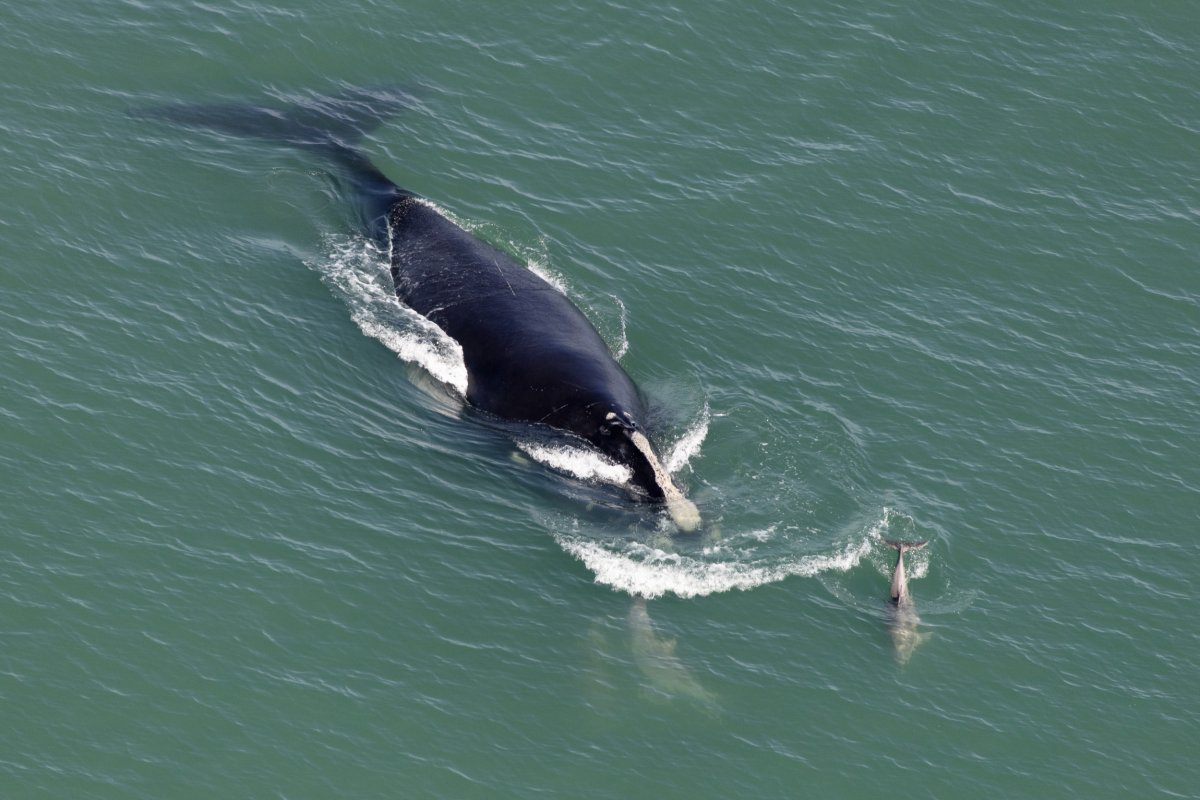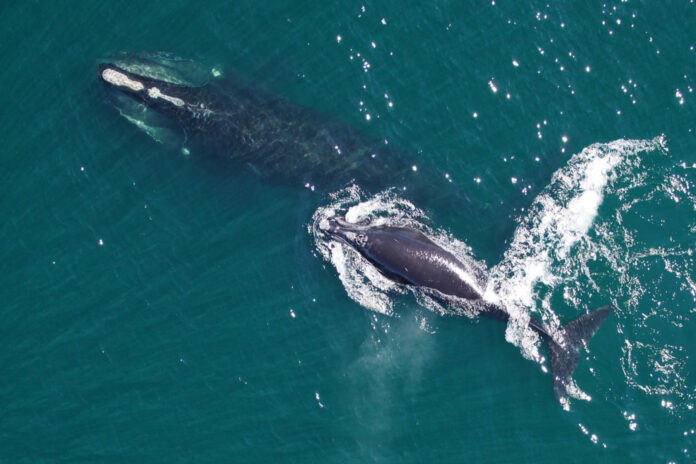A critically endangered species of whale is getting smaller and smaller thanks to climate change.
These shrinking giants are North Atlantic right whales, of which there are only an estimated 356 individuals left in the wild worldwide. Now, the remaining whales are shrinking, and this may lead to even fewer babies being born, according to a new paper in the journal Royal Society Open Science.
The researchers analysed historical data going back to the 1970s about North Atlantic right whales, including information regarding whale length, gathered using aerial photography. They found that the average length of adult females of the species has declined over the past few decades. This might have to do with the increased scarcity of food due to climate change.
North Atlantic right whales are listed as critically endangered on the IUCN Red List. They can reach lengths of up to 52 feet, with calves being born around 13-15 feet long. These whales typically mate in the winter months and give birth every 3 to 5 years after a gestation period of around 12 months. Calves are born in warmer waters, such as off the coast of Georgia or Florida, and are dependent on their mothers for several months.
This declining length results in fewer calves being born due to the impact it has on the body volume of the female whales. According to the paper, a 46-foot female had a 56 percent chance of successfully giving birth, compared to only a 14 percent chance for a female 10 feet smaller at 36 feet.
“Body size (as represented by the cube of length) was strongly associated with a female’s calving probability at each reproductive opportunity. This relationship explained 62 percent of the variation in calving among reproductive females, along with their decreasing health (20 percent),” the authors wrote in the paper.
This decline in birth rate may be due to the decrease in lipid storage in females that have a smaller body volume, as these lipids store a huge amount of energy needed to grow a fetus and produce milk for a calf.
North Atlantic right whales are filter feeders, primarily consuming zooplankton like krill. They use baleen plates in their mouths to filter these tiny organisms from the water. This decline in female body length is likely due to climate change and alterations in the availability of the food of these whales.
NOAA Northeast Fisheries Science Center/Lisa Conger and Elizabeth Josephson
“A decline in size has been hypothesized as a common response to climate change, although the issue is debated and the ultimate mechanisms (evolution versus plasticity) are unclear,” the authors wrote in the paper. “Proximately, smaller sizes have been ascribed to changes in growth resulting from impaired nutrition linked with reduced availability or quality of food resources. Such changes can affect the maximum size individuals can reach.”
In other species around the world, changing climate has influenced food availability and had a subsequent effect on body size. In many of these cases, the decreased body size has been a precursor to population collapse.
These species face numerous threats, including entanglement in fishing gear, ship strikes, and habitat degradation. Only a few weeks ago, a North Atlantic right whale was found dead on a beach in Martha’s Vineyard, having died from injuries related to entanglement. The researchers stress that this discovery, therefore, does not bode well for the species, which is already on the precipice of extinction.

ISTOCK / GETTY IMAGES PLUS
“Decreasing mean body size and its effects on reproductive performance is another concerning indication of the progressive worsening of this species’ prospects, requiring urgent interventions,” the authors concluded in the paper.
“While removing direct threats to survival is a first necessary step, management policies that enhance female health and growth to achieve higher rates of reproduction will ultimately be necessary to support the recovery of this and other populations affected by environmental change.”
Do you have a tip on a science story that Newsweek should be covering? Do you have a question about endangered whales? Let us know via [email protected].
Uncommon Knowledge
Newsweek is committed to challenging conventional wisdom and finding connections in the search for common ground.
Newsweek is committed to challenging conventional wisdom and finding connections in the search for common ground.


